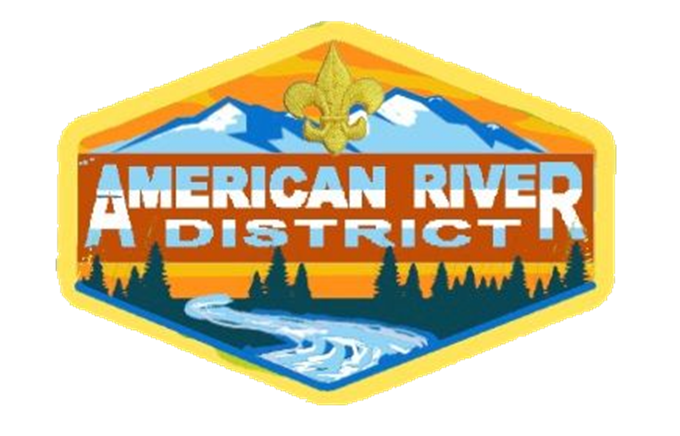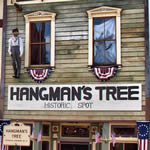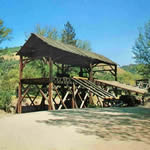HEALTH + SAFETY
Safe Travels
While the amount of camping may be reduced right now, we are definitely traveling, so follow this fillable checklist to have a safe trip -- whether it's a Scout event or not.
When dealing with hazardous weather travels, our direct contact scouters (Scoutmaster, Assistants, and other level leaders in scouting), need to have this training. To access this course and other safety trainings, follow this link and go to your training account to take the course. Here is the Hazardous Weather Training FAQ page.
Food Allergies Meet Scouting
Whenever we are at scout outings or events, there is the possibility of meeting someone with a food allergy. Follow this Health and Safety Link to learn more about making scouting fun and possible for scouts and their leaders.
Safeguarding Youth training:
YPT is now SYT: Safeguarding Youth training.Scouting America’s most important training has been updated with an entirely new look and feel, including a greater emphasis on the organization’s SAFE initiative, updated information on technology and the threat to youth online, and the use of real volunteers in real Scouting environments.
The training previously known as Youth Protection is now called Safeguarding Youth and is available immediately on my.Scouting. If your Youth Protection is current, you do not need this training until your Youth Protection is about to expire. The new course is a 90-minute course with an annual update that takes 15 minutes according to this article.
Are your scouts (and scouters) interested in Skateboarding?
Check out this link for safety tipsGuide to Safe Scouting:
https://www.scouting.org/health-and-safety/gss/toc/S.A.F.E. checklist https://www.scouting.org/health-and-safety/safe/ and here is the printable checklist
Safety Moments https://www.scouting.org/health-and-safety/safety-moments/
Tree Hazards
When planning your campsite, look out for tree hazards. Follow this checklist for more safety tips. Happy Safe Scouting!
Power Tools Safety
https://filestore.scouting.org/filestore/healthsafety/pdf/680-028.pdf
5 Tips for Safe Hiking
Every good hike starts with good prep. Whether you're on a weekend trail or headed into the backcountry, these five Scout-tested safety tips can help prevent problems before they start—and keep your adventure on track!
- Always Tell Someone Where You're Going Let someone know your route and expected return time—even for short hikes.
- Carry a First Aid Kit Small injuries can turn into big issues fast. A compact kit with bandages, antiseptic, and blister care is essential.
- Stay Hydrated and Pack Snacks Dehydration can creep up quickly. Bring a reusable water bottle and high-energy snacks like trail mix or granola bars.
- Protect Yourself From the Elements A wide-brim hat shields you from sun and heat. Sunglasses and SPF are just as important as boots.
- Be Weather-Ready Conditions change quickly—especially at elevation. Bring lightweight layers and a compact rain shell in your daypack.
You’ll find many of these trail essentials—like first aid kits, hydration gear, and protective headwear—online or at your local Scout Shop.
Safety Moment: Wildfire Safety
Safety Moment: Wildfire Safety
Resources:
American Red Cross Wildfire Safety
Survival Strategies to Help Escape a Forest Fire
Wildland Fire Management Test Lab Merit Badge
SAFETY MOMENT: ANXIETY
Anxiety is the body's normal stress response; however long-term stress has negative effects on a young person's life and health. Anxiety can be caused by everyday activities as well as bullying and school issues or traumatic events such as the death of a loved one or abuse. Due to the rising percentage of youth struggling with anxiety, it is important that all adults working with youth of all ages understand and recognized the signs of anxiety and know how to help youth find the help they need and tools to cope with the anxiety. Take note that as with other mental health disorders, symptoms of anxiety can very from person to person.
The following are commonly seen symptoms:
- Fatigue
- Difficulty concentrating
- Anger or irritability
- trouble with sleeping
- Muscle tension
- Headaches
- Stomach aches
- Nervousness, or being on edge
How to help:
- Recognize the signs of anxiety.
- If a youth appears to be struggling, talk with a parent or adult about concerns
- Don't dismiss it. (Avoid terms such as: "Don't worry", "you'll be fine, "calm down", etc.)
- Encourage the parent and youth to find a trusted person to talk about any issues/struggles that they might be facing and who can help them discover ways to cope.
- Ensure the youth gets adequate rest and healthy meals while camping
- Listen and strive to be kind, calm, and compassionate
- Provide a safe environment for everyone at meetings, camps and activities.
- Anxiety occurs at all ages and as scout leaders recognize anxiety, they can help parents and youth find success in a positive way.
Additional Resources:
- https://www.scouting.org/health-and-safety/safety-moments/psychological-first-aid
- https://www.mentalhealthfirstaid.org/programs/
- https://www.scouting.org/outdoor-programs/trail-to-adventure/supporting-our-scouts-mental-health-at-camp/
- https://www.scouts.org.uk/news/2020/april/tips-for-coping-with-anxiety-attacks/
- https://www.who.int//news-room/fact-sheets/detail/adolescent-mental-health/?gclid=CjOKCQjwgNanBhDUARlsAAelcAtMMFjVg8qmoOH8ZOUowbju3HgfJtVRO8-i6YiTOiNBf8-gTVrrP3QaAnmBEALw_wcB
How to Keep Scouts Safe in Summer Heat
- How to Stay Hydrated on Every Outdoor Adventure
- Keep Your Campfire & Food Safe This Summer!
- Service Project Planning Checklist
- Safe Project Tool Use







